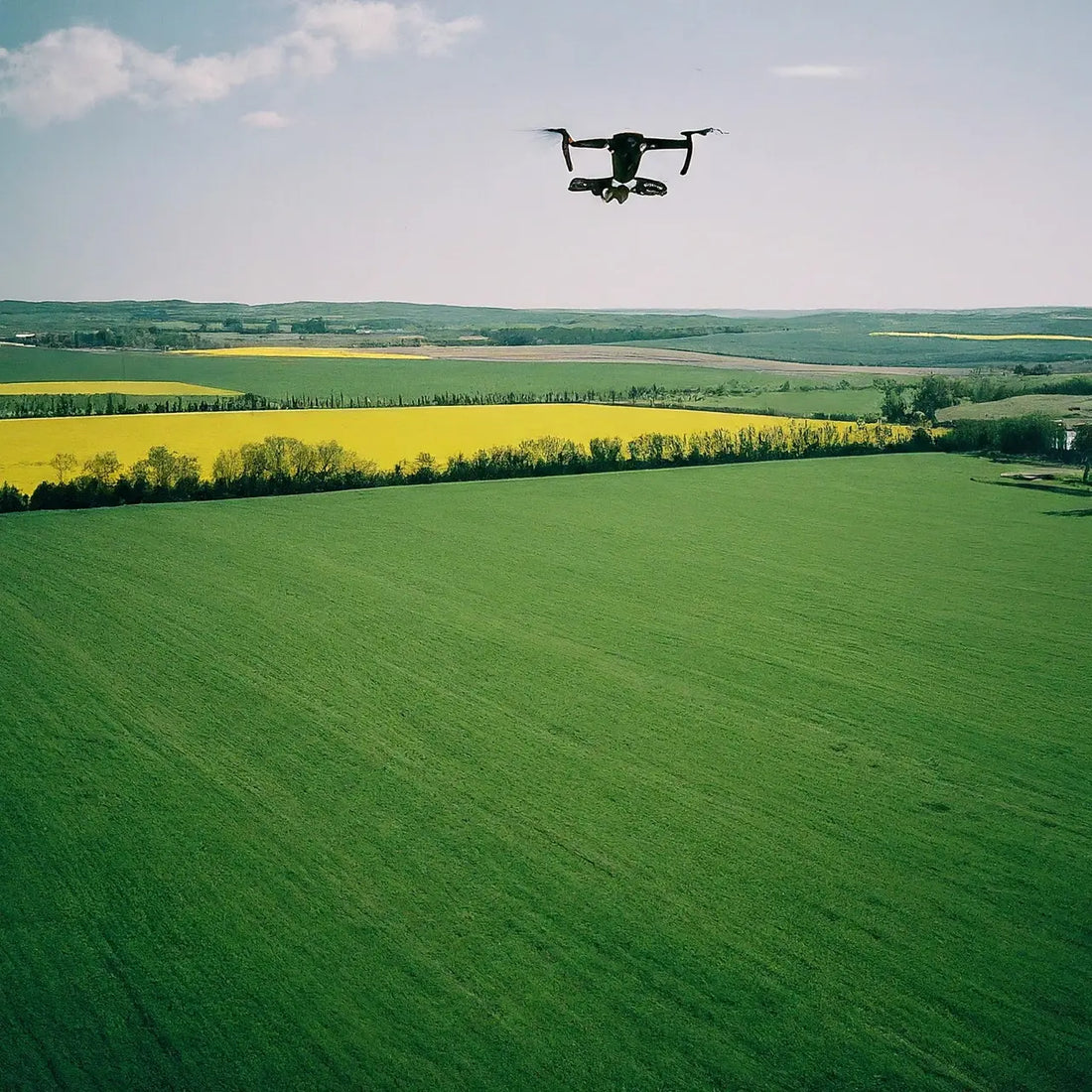
A Farmer’s Guide to Choosing the Right Agricultural Drones for Their Farm in Huron
Share
In the vast countryside of Huron, where the horizon stretches wide and the land whispers the secrets of a bountiful harvest, a revolution is taking shape. This revolution does not come riding on the backs of horses nor is it heralded by the plow; it flies through the air, with propellers whirring and cameras capturing the wealth of the earth below. This revolution is the advent of agriculture drones, a technology that is changing the face of farming one flight at a time.
Understanding the Role of Agricultural Drones
Before diving into the world of drones, it’s crucial to first understand what makes agricultural drones so instrumental for modern-day farmers in Huron. Unlike traditional farming methods, these drones offer a bird’s-eye view, effortlessly scanning large expanses of land to monitor crop health, irrigation, and more. This aerial advantage not only saves time but ensures that a farmer’s understanding of their land is as comprehensive as the care they pour into it.
Moreover, agricultural drones go beyond mere observation. Equipped with advanced sensors and imaging capabilities, they can detect changes in plant health, moisture levels, and even pest infestations. This vital data helps farmers make informed decisions, turning the once daunting task of managing vast agricultural landscapes into a manageable, even enjoyable, part of their daily routine.
Key Features to Look for in Agricultural Drones
When selecting an agricultural drone, several key features stand out. Firstly, battery life is paramount; longer flight times mean more land covered. Secondly, farmers should seek drones with high-resolution cameras and multispectral sensors, as these features provide the clearest picture of crop health and land conditions.
Durability also cannot be overlooked. Farming landscapes can be tough on equipment, and a drone’s ability to withstand the elements and the occasional collision with a tree or barn is crucial. Additionally, ease of use and data analysis capabilities are important considerations. The data collected is only as good as the insights it can generate, so drones that offer user-friendly interfaces and robust analysis tools will stand out from the crowd.
Lastly, compatibility with existing farm management systems ensures that integrating drone data into day-to-day operations is seamless, allowing for a holistic approach to farm management that leverages the best of technology and traditional knowledge.
Top Agricultural Drone Models for Huron Farms
Among the top models suitable for Huron’s diverse agricultural landscape, the DJI Agras series stands out for its robust design and efficient spray systems, ideal for both crop surveillance and treatment. The Parrot Anafi Thermal is another excellent choice, praised for its thermal imaging capabilities that provide critical data for irrigation management and pest detection.
Farmers interested in high-resolution imaging might gravitate towards the Pix4DFields drone, an option that excels in converting aerial imagery into actionable farm data. Its precision and ease of use make it a favorite among technologically savvy farmers who are keen to dive deep into the analytics of farm management.
Navigating Legal Considerations in Huron
Before deploying drones, Huron farmers must navigate a few legal considerations. Licensing is often the first step, as flying a drone for commercial purposes requires a Federal Aviation Administration (FAA) certification in the United States. Additionally, privacy and data protection laws necessitate careful planning on how drone-collected data is stored and shared.
Compliance with local regulations is crucial, especially in areas where drone use might overlap with residential spaces or protected wildlife habitats. Familiarizing oneself with these guidelines not only ensures legal operation but also promotes a culture of responsibility and respect among the farming and broader communities.
Implementing Drones Into Your Farming Operations
The journey to integrate drones into farming operations is as much about embracing new perspectives as it is about mastering new technology. Starting small, perhaps with a pilot area of your farm, allows for a learning curve that is manageable and insight-driven.
Creating a detailed implementation plan that outlines goals, expected outcomes, and metrics for success can help in evaluating the impact of drone technology on your farming operations. Such planning not only solidifies the role of drones within your agricultural practices but also paves the way for future innovations and efficiencies.
Ongoing education and community engagement further enhance the benefits of agricultural drones. By staying informed about the latest developments in drone technology and sharing experiences with fellow farmers, the agricultural community of Huron can soar to new heights of productivity and sustainability.
From understanding the basic roles of agricultural drones to selecting the perfect model for your operations in Huron, embracing these aerial eyes in the sky promises a future of precision agriculture that could redefine productivity. As the landscape of Huron’s farming community continues to evolve with these advanced tools, each farmer stands on the brink of a new dawn, where efficiency and insight can lead to greater yields and sustainability. Remember, in the fields of Huron, the sky is not just the limit; it’s the new frontier.

